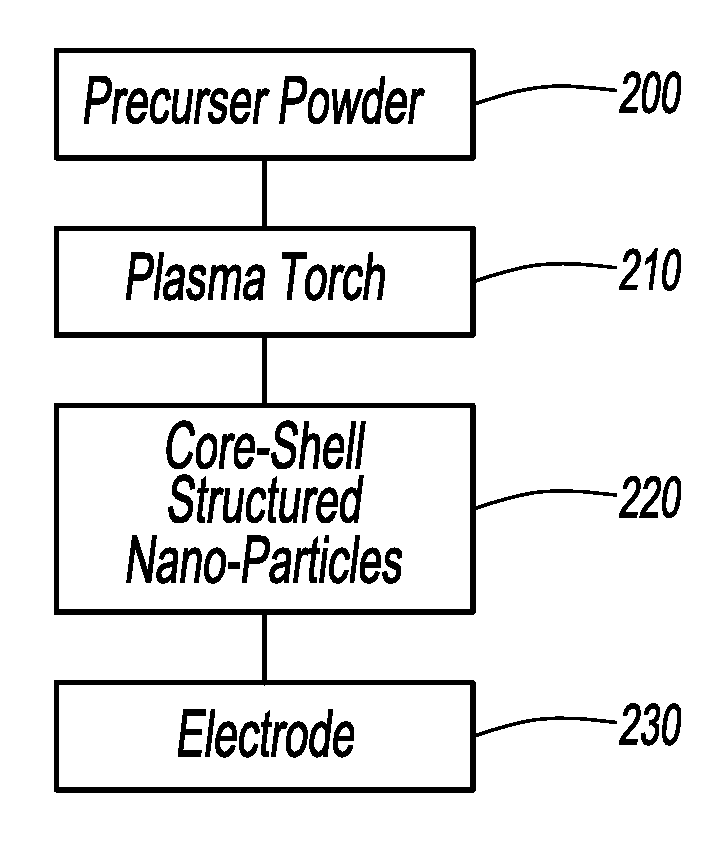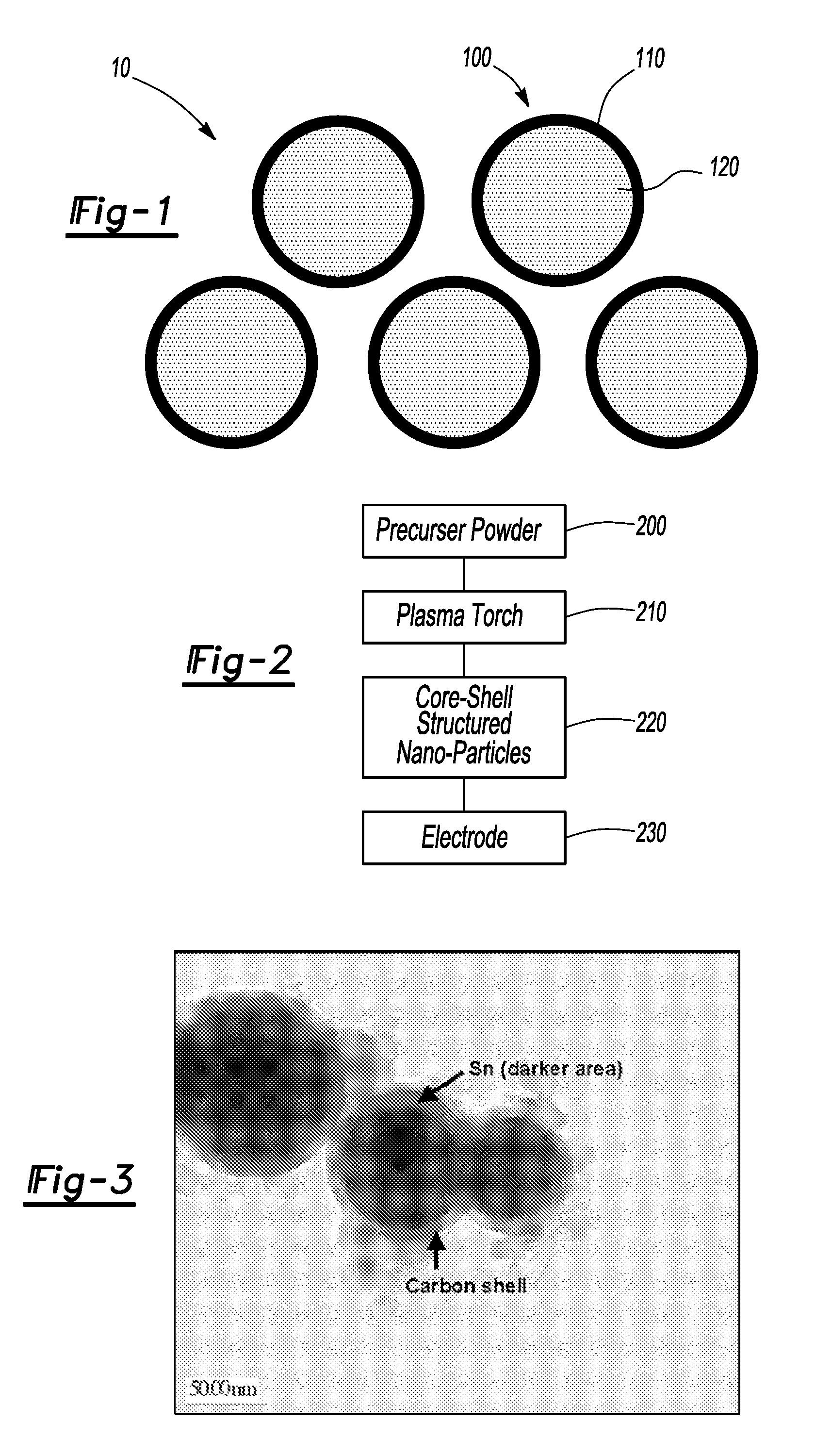Material With Core-Shell Structure
a core-shell structure and material technology, applied in the field of materials, can solve the problems of battery specifications not being met using traditional lithium-ion battery chemistries, battery energy requirements are continually increasing, and volume and mass constraints remain presen
- Summary
- Abstract
- Description
- Claims
- Application Information
AI Technical Summary
Benefits of technology
Problems solved by technology
Method used
Image
Examples
example
[0018]In an attempt to produce a carbon shell-tin core composite particle, a dry precursor powder was prepared having a tin to anthracene ratio of 50:1. It is appreciated that other aromatic coke forming compounds such as naphthalene or acenaphthalene can be used for providing the carbon material. The precursor powder was suspended in an argon gas, thereby producing an aerosol gas of argon with anthracene and tin. The aerosol gas was passed through a low power atmospheric or near atmospheric pressure plasma with microwave energy focused within a coupler. It is appreciated that plasmas generated using other methods can also be used. In addition to the aerosol gas, a second supply of argon gas was passed through the plasma area.
[0019]Not being bound by theory, the inventors postulate that upon passing through the plasma hot zone, the carbon within the precursor powder undergoes a carbonization mechanism forming carbon fragments. In addition, the tin within the precursor powder melts a...
PUM
| Property | Measurement | Unit |
|---|---|---|
| Thickness | aaaaa | aaaaa |
| Thickness | aaaaa | aaaaa |
| Diameter | aaaaa | aaaaa |
Abstract
Description
Claims
Application Information
 Login to View More
Login to View More - R&D
- Intellectual Property
- Life Sciences
- Materials
- Tech Scout
- Unparalleled Data Quality
- Higher Quality Content
- 60% Fewer Hallucinations
Browse by: Latest US Patents, China's latest patents, Technical Efficacy Thesaurus, Application Domain, Technology Topic, Popular Technical Reports.
© 2025 PatSnap. All rights reserved.Legal|Privacy policy|Modern Slavery Act Transparency Statement|Sitemap|About US| Contact US: help@patsnap.com


